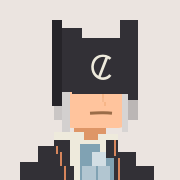Contents
1. Relativity in Music
In the previous section you learned that every key has its own prime chords.
The reason why guitarists memorize a large number of chords lies here. They have to switch the set of prime chords according to the key of a song.
Let’s say a guitarist makes a song for a singer. They first made a song in the key of C:
- CEmAmF
But then the singer asks the guitarist to transpose the entire track 2 semitones up.
- DF
mBmG
The song becomes in the key of D major. Now I have a question: Do you think the two songs are the “same”?
Absolute or Relative
—The answer could be YES and NO.
Both make sense. This means that you have two perspectives on music structure :Absolute or relative.
Chord names are absolute notations so it shows you that two chord progressions are “different”.
But then, what shows you that the two are essentially the same? We don’t have any tools for that, which is a big problem.
As explained in Mechanism of Scales (2)Transposition, we enjoy music mainly from relative perspective. To make this point clear, we relativized major scale by using the relative term “tonal center” and the relative structure “WWSWWWS”.
By this relativization you understand the mechanism of scales. Similarly, it is essential to relativize chord progressions in order to fully understand its system.
2. Roman Numeral Analysis
How do we do that? — We use numbers. We assign roman numerals to each chord.
C is the captain of C major key so it is labeled No.1. Then just assign numbers to the others ascendingly. These numbers are termed Degrees.
Now alphabets are abstracted and these degrees convey information solely about its relative position in a key. This abstraction method is called Roman Numeral Analysis (RNA).
3. Use in Practice
Let’s practice RNA, taking the songs shown above as examples.
Practice 1 : Alphabets to Numerals
- CEmAmF
This chord progression is in the key of C. So list up the chords in C and check the assignment of Roman numerals to each chord.
CEmAmF in C major key is abstracted to IIIImVImIV. RNA, done!
Practice 2 : Numerals to Alphabets
Now imagine you’re the guitarist who is asked to transpose the song 2 semitones up. First you should look up in the circle of fifths the member of prime chords in D major key.
Then assign Roman numerals to each chord, and you can find what chord progression corresponds to IIIImVImIV in D major key.
You can confirm that DFmBmG is the exact counterpart of CEmAmF!
Through RNA you can clearly explain that the two chord progressions are identical in its relative structure😇
Circle of Fifths and Degrees
Or you can directly remember the correspondence between degrees and the position in the circle of fifths.
In the outer circle, I stands at the center. In clockwise direction is V and in anticlockwise IV. In the inner circle, VIm at the center, IIIm clockwise and IIm anticlockwise.
Team, Members and Uniforms
Imagine that RNA is like dressing chords in numbered uniforms. “Major key” is one of the musical teams and its uniforms are fixed : I, IIm, IIIm, IV, V, VIm. But there are 12 different patterns to actualize this team.
Chord names are just superficial information for musicians to reproduce a song. On analyzing a song, all that matters is its relative structure. RNA is one of the most important idea in music theory so you definitely have to get accustomed to reading Roman numerals😭


